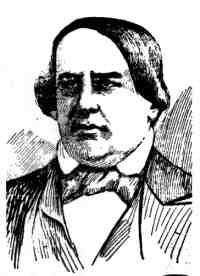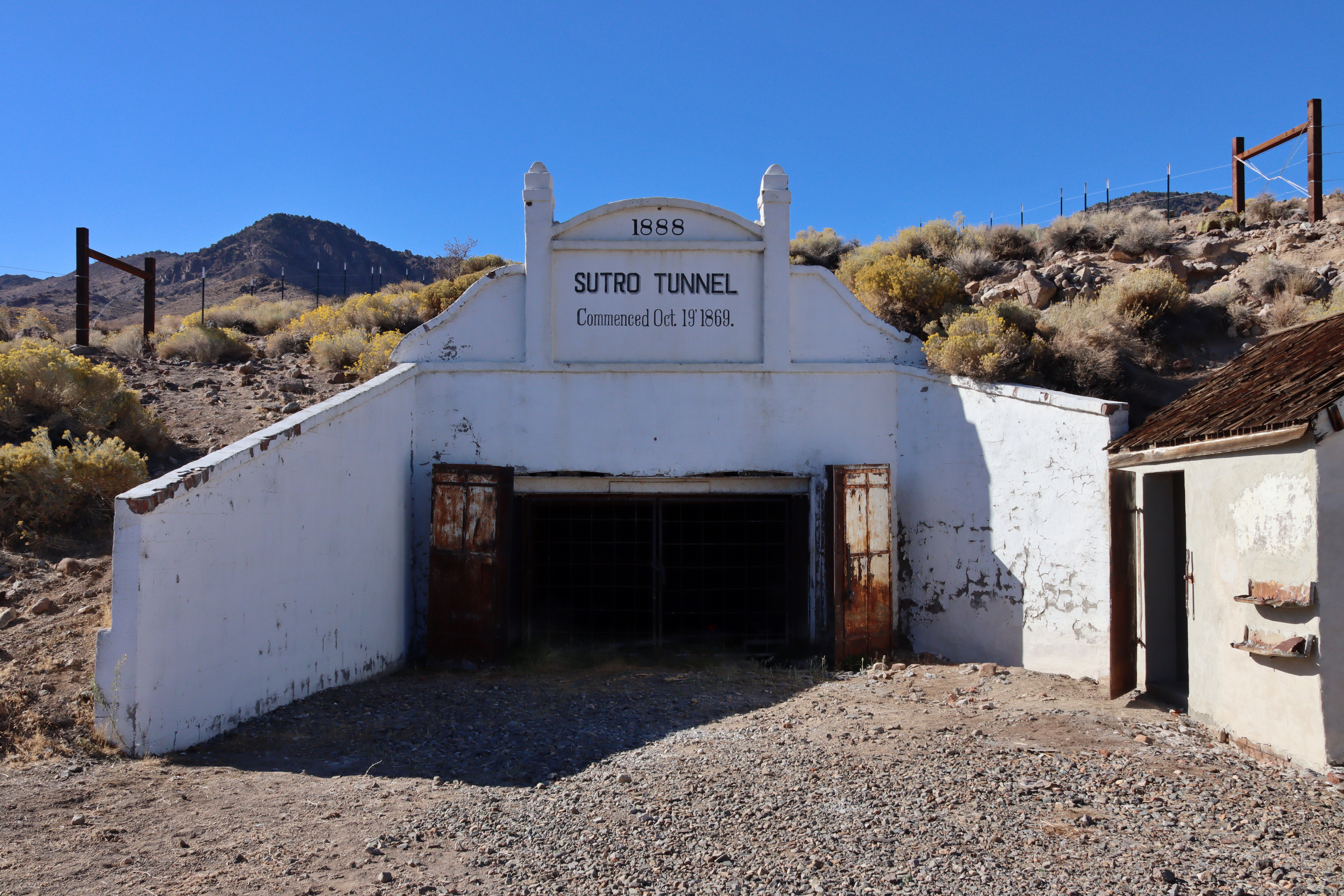|
Rancho San Miguel (Noé)
Rancho San Miguel was a Mexican land grant in present-day San Francisco County, California. The land grant was given in 1845 by Governor Pío Pico to José de Jesús Noé. It included what is now known as Eureka Valley, and extended past Mount Davidson almost to present-day Daly City; it encompassed the present-day San Francisco neighborhoods of Noe Valley, the Castro, Glen Park, Diamond Heights and St. Francis Wood. History José de Jesús Noé (1805-1862) was born in Puebla, Mexico. He came to California with his wife, Guadalupe Garduno, in 1834 with the Hijar-Padres Colony. During the last years of Mexican rule in California, he held several administrative posts in San Francisco. He was alcalde in 1842 and in part of 1846. He received the one square league Rancho San Miguel grant in 1845. With the cession of California to the United States following the Mexican-American War, the 1848 Treaty of Guadalupe Hidalgo provided that land grants would be honored. As required ... [...More Info...] [...Related Items...] OR: [Wikipedia] [Google] [Baidu] |
Jose De Jesus Noe
Jose is the English language, English transliteration of the Hebrew language, Hebrew and Aramaic language, Aramaic name ''Yose'', which is etymologically linked to ''Yosef'' or Joseph. The name was popular during the Mishnaic and Talmudic periods. *Jose ben Abin *Jose ben Akabya *Jose the Galilean *Jose ben Halafta *Jose ben Jochanan *Jose ben Joezer of Zeredah *Jose ben Saul Given name Male * Jose (actor), Indian actor * Jose C. Abriol (1918–2003), Filipino priest * Jose Advincula (born 1952), Filipino Catholic Archbishop * Jose Agerre (1889–1962), Spanish writer * Jose Vasquez Aguilar (1900–1980), Filipino educator * Jose Rene Almendras (born 1960), Filipino businessman * Jose T. Almonte (born 1931), Filipino military personnel * Jose Roberto Antonio (born 1977), Filipino developer * Jose Aquino II (born 1956), Filipino politician * Jose Argumedo (born 1988), Mexican professional boxer * Jose Aristimuño, American political strategist * Jose Miguel Arroyo (born 1945), Ph ... [...More Info...] [...Related Items...] OR: [Wikipedia] [Google] [Baidu] |
List Of Pre-statehood Mayors Of San Francisco
This is a list of pre-statehood alcaldes and mayors of San Francisco, from 1779 to 1850, during the Spanish, Mexican, and early American periods, prior to California's admission to statehood. Spanish era California's first governor Felipe de Neve ordered all of the Missions to elect local Alcaldes (a combination of Mayor and Magistrate) around 1779.Fr. Engelhardt O. F. M, Zephyrin. San Francisco or Mission Dolores, Franciscan Herald Press, 1924 pg 97 Mexican era American era See also *List of pre-statehood mayors of Los Angeles *List of pre-statehood mayors of San Jose *List of pre-statehood mayors of San Diego References {{reflist, colwidth=30em * mayors In many countries, a mayor is the highest-ranking official in a Municipal corporation, municipal government such as that of a city or a town. Worldwide, there is a wide variance in local laws and customs regarding the powers and responsibilities ... *San Francisco *San Francisco Pre-statehood history of Ca ... [...More Info...] [...Related Items...] OR: [Wikipedia] [Google] [Baidu] |
California Ranchos
The Spanish and Mexican governments made many concessions and land grants in Alta California (now known as California) and Baja California from 1775 to 1846. The Spanish Concessions of land were made to retired soldiers as an inducement for them to remain in the frontier. These Concessions reverted to the Spanish crown upon the death of the recipient. The Mexican government later encouraged settlement by issuing much larger land grants to both native-born and naturalized Mexican citizens. The grants were usually two or more square leagues, or in size. Unlike Spanish Concessions, Mexican land grants provided permanent, unencumbered ownership rights. Most ranchos granted by Mexico were located along the California coast around San Francisco Bay, inland along the Sacramento River, and within the San Joaquin Valley. When the government secularized the Mission churches in 1833, they required that land be set aside for each Neophyte family. But the Native Americans were quickly ... [...More Info...] [...Related Items...] OR: [Wikipedia] [Google] [Baidu] |
List Of Ranchos Of California
These California land grants were made by Spanish (1784–1821) and Mexican (1822–1846) authorities of Las Californias and Alta California to private individuals before California became part of the United States of America.Shumway, Burgess M.,1988, ''California Ranchos: Patented Private Land Grants Listed by County'', The Borgo Press, San Bernardino, CA, Under Spain, no private land ownership was allowed, so the grants were more akin to free leases. After Mexico achieved independence, the Spanish grants became actual land ownership grants. Following the Mexican–American War, the 1848 Treaty of Guadalupe Hidalgo provided that the land grants would be honored. Alta California ranchos in Mexico From 1773 to 1836, the border between Alta California and Baja California was about 30 miles south of the Mexico–United States border drawn by the Treaty of Guadalupe Hidalgo that ended the Mexican–American War in 1848. Under the Siete Leyes constitutional reforms of 1836, the Alt ... [...More Info...] [...Related Items...] OR: [Wikipedia] [Google] [Baidu] |
Adolph Sutro
Adolph Heinrich Joseph Sutro (April 29, 1830 – August 8, 1898) was a German-American engineer, politician and philanthropist who served as the 24th mayor of San Francisco from 1895 until 1897. Born a German Jew, he moved to Virginia City, Nevada and made a fortune at the Comstock Lode. Several places in San Francisco bear his name in remembrance of his life and contributions to the city. Early life Born to a Jewish family in Aachen, Rhine Province, Prussia (today North Rhine-Westphalia, Germany), Sutro was the oldest of eleven children of Rosa (Warendorff) and Emanuel Sutro. He spent his youth working in his father's cloth factory and at school. After his father's death, he and one of his brothers, Sali ''(né'' Emanuel Sali Sutro; 1827–1908), began running the cloth factory. The Prussian rebellion in 1848 caused the family to leave for America in 1850 and settle in Baltimore. Soon after, Adolph left for California and arrived in San Francisco on November 21, 1851. ... [...More Info...] [...Related Items...] OR: [Wikipedia] [Google] [Baidu] |
Mayor Of San Francisco
The mayor of the City and County of San Francisco is the head of the executive branch of the San Francisco city and county government. The officeholder has the duty to enforce city laws, and the power to either approve or veto bills passed by the San Francisco Board of Supervisors, the legislative branch. The mayor serves a four-year term and is limited to two successive terms. Because of San Francisco's status as a consolidated city-county, the mayor also serves as the head of government of the county; both entities have been governed together by a combined set of governing bodies since 1856. There have been 45 individuals who have served as mayor in San Francisco since 1850, when California became a state following the American Conquest of California. Prior to the conquest, Californios served as Mayor of San Francisco during the Spanish and Mexican eras since 1779. The current mayor is former District 5 supervisor and president of the Board of Supervisors London Breed, who w ... [...More Info...] [...Related Items...] OR: [Wikipedia] [Google] [Baidu] |
Foreclosure
Foreclosure is a legal process in which a lender attempts to recover the balance of a loan from a borrower who has stopped making payments to the lender by forcing the sale of the asset used as the collateral for the loan. Formally, a mortgage lender (mortgagee), or other lienholder, obtains a termination of a mortgage borrower (mortgagor)'s equitable right of redemption, either by court order or by operation of law (after following a specific statutory procedure). Usually a lender obtains a security interest from a borrower who mortgages or pledges an asset like a house to secure the loan. If the borrower defaults and the lender tries to repossess the property, courts of equity can grant the borrower the equitable right of redemption if the borrower repays the debt. While this equitable right exists, it is a cloud on title and the lender cannot be sure that they can repossess the property. Therefore, through the process of foreclosure, the lender seeks to immediately ... [...More Info...] [...Related Items...] OR: [Wikipedia] [Google] [Baidu] |
Land Patent
A land patent is a form of letters patent assigning official ownership of a particular tract of land that has gone through various legally-prescribed processes like surveying and documentation, followed by the letter's signing, sealing, and publishing in public records, made by a sovereign entity. It is the highest evidence of right, title, and interest to a defined area. It is usually granted by a central, federal, or state government to an individual, partnership, trust, or private company. The land patent is not to be confused with a land grant. Patented lands may be lands that had been granted by a sovereign authority in return for services rendered or accompanying a title or otherwise bestowed ''gratis'', or they may be lands privately purchased by a government, individual, or legal entity from their prior owners. "Patent" is both a process and a term. As a process, it is somewhat parallel to gaining a patent for intellectual property, including the steps of uniquely def ... [...More Info...] [...Related Items...] OR: [Wikipedia] [Google] [Baidu] |
Public Land Commission
The California Land Act of 1851 (), enacted following the Treaty of Guadalupe Hidalgo and the admission of California as a state in 1850, established a three-member Public Land Commission to determine the validity of prior Spanish and Mexican land grants. It required landowners who claimed title under the Mexican government to file their claim with a commission within two years. Contrary to the Treaty of Guadalupe Hidalgo, which guaranteed full protection of all property rights for Mexican citizens, it placed the burden on landholders to prove their title. While the commission eventually confirmed 604 of the 813 claims, almost all of the claims went to court and resulted in protracted litigation. The expense of the long court battles required many land holders to sell portions of the property or even trade it in payment for legal services. A few cases were litigated into the 1940s. Legislation California Senator William M. Gwin presented a bill that was approved by the Senate ... [...More Info...] [...Related Items...] OR: [Wikipedia] [Google] [Baidu] |
Treaty Of Guadalupe Hidalgo
The Treaty of Guadalupe Hidalgo ( es, Tratado de Guadalupe Hidalgo), officially the Treaty of Peace, Friendship, Limits, and Settlement between the United States of America and the United Mexican States, is the peace treaty that was signed on 2 February 1848, in the Villa de Guadalupe Hidalgo (now a neighborhood of Mexico City) between the United States and Mexico that ended the Mexican–American War (1846–1848). The treaty was ratified by the United States on 10 March and by Mexico on 19 May. The ratifications were exchanged on 30 May, and the treaty was proclaimed on 4 July 1848. With the defeat of its army and the fall of its capital in September 1847, Mexico entered into negotiations with the U.S. peace envoy, Nicholas Trist, to end the war. On the Mexican side, there were factions that did not concede defeat or seek to engage in negotiations. The treaty called for the United States to pay US$15 million to Mexico and to pay off the claims of American citizens against Mex ... [...More Info...] [...Related Items...] OR: [Wikipedia] [Google] [Baidu] |
Mexican-American War
Mexican Americans ( es, mexicano-estadounidenses, , or ) are Americans of full or partial Mexicans, Mexican heritage. In 2019, Mexican Americans comprised 11.3% of the US population and 61.5% of all Hispanic and Latino Americans. In 2019, 71% of Mexican Americans were born in the United States, though they make up 53% of the total population of foreign-born Latino Americans and 25% of the total foreign-born population. The United States is home to the second-largest Mexicans, Mexican community in the world (24% of the entire emigration from Mexico, Mexican-origin population of the world), behind only Mexico. Most Mexican Americans reside in Southwestern United States, the Southwest (over 60% in the states of California and Texas). Many Mexican Americans living in the United States have assimilated into Culture of the United States, American culture which has made some become less connected with their culture of birth (or of their parents/ grandparents) and sometimes creates an i ... [...More Info...] [...Related Items...] OR: [Wikipedia] [Google] [Baidu] |
Mexican Cession
The Mexican Cession ( es, Cesión mexicana) is the region in the modern-day southwestern United States that Mexico originally controlled, then ceded to the United States in the Treaty of Guadalupe Hidalgo in 1848 after the Mexican–American War. This region had not been part of the areas east of the Rio Grande that had been claimed by the Republic of Texas, though the Texas annexation resolution two years earlier had not specified the southern and western boundary of the new state of Texas. At roughly , the Mexican Cession was the third-largest acquisition of territory in U.S. history, surpassed only by the Louisiana Purchase and the Alaska Purchase. Most of the area had been the Mexican territory of Alta California, while a southeastern strip on the Rio Grande had been part of Santa Fe de Nuevo México, most of whose area and population were east of the Rio Grande on land that had been claimed by the Republic of Texas since 1835, but never controlled or even approached aside ... [...More Info...] [...Related Items...] OR: [Wikipedia] [Google] [Baidu] |








